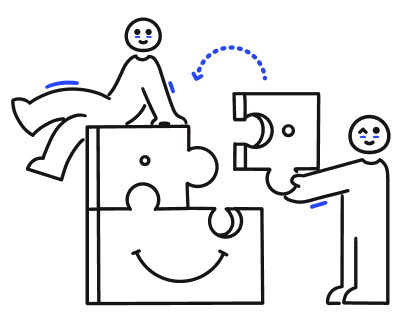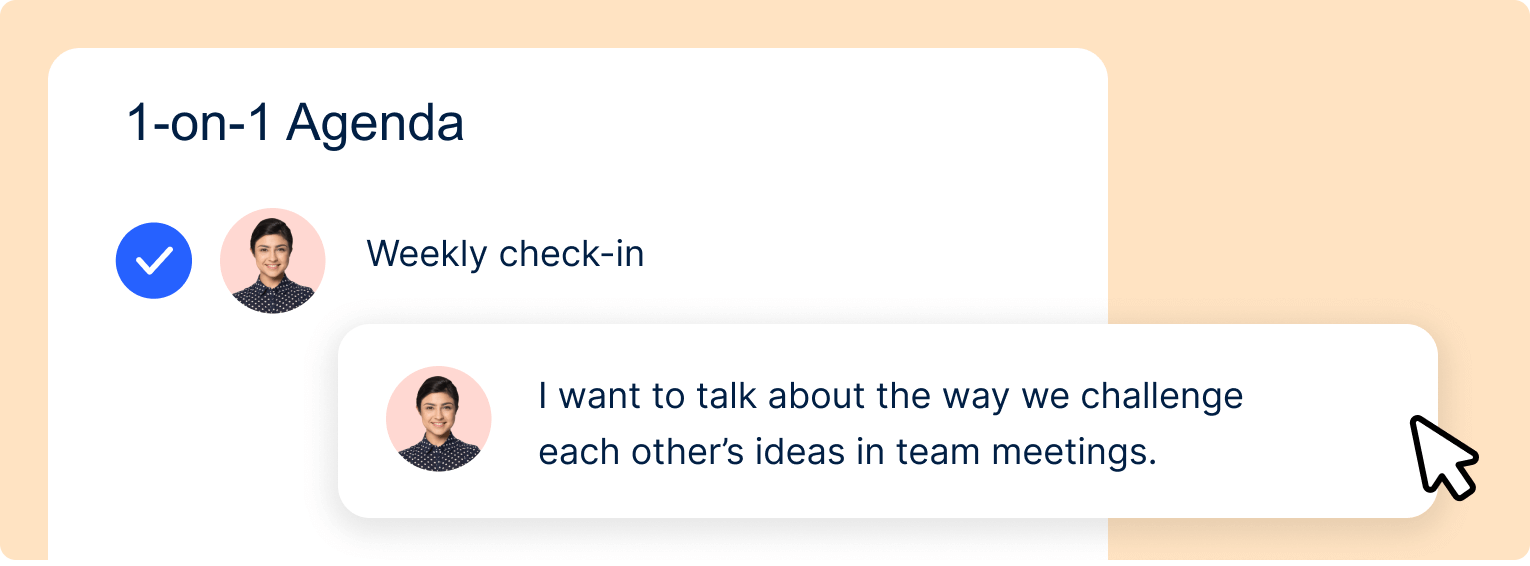Julie Jeannotte is our internal Employee Engagement Expert and Senior Researcher at Officevibe.
It’s been a whole year. Doesn’t one side of you feel like it’s been forever, and the other that time has just flown by?
Spring is finally here, the sun is out and the mild weather feels really good for the soul.
You could call it perfect timing; all of the conditions are there for us to take a good look at our work-life balance and how it’s evolved over the last year, and to take on some positive new habits.
From flawed to flawless: 5 steps to leading distributed teams

In this article you will find:
A quick look back on the last year...
The pandemic has changed our lives in many ways, one of them being that many of us are working from home, or, if we change the perspective a little — now full-time living at work.
In this new era of work, it has become increasingly difficult for people to disconnect, hindering work-life balance.
And when balance is off, not only are our lives out of sync but performing individually and within a team becomes increasingly difficult.
In this new life context we’re in, it’s not surprising that people are becoming more susceptible to burnout and mental health issues.
In fact, the statistics have gotten so alarming that we simply can’t ignore it any longer.
The effects of the pandemic on our well-being
According to Officevibe’s Pulse Survey data, today:
- 47% of employees report that they feel overwhelmed at work.
- 35% of employees say that their organization does not provide the right support they need to deal with work-related stress.
- 39% of employees report negative feelings about their work-related stress.
- At least 15% of employees feel like their direct managers do not care about their well-being.
- At least 23% of employees feel like their organization doesn’t take enough action to care for their well-being.
This clearly shows that stress is an issue, and that the need to support employees in this hectic time is of the upmost importance in preventing burnout and supporting mental health.
Recent research from Harvard Business Review gathered feedback from over 1,500 respondents. People surveyed in 46 countries, from various industries, roles, and seniority levels show similar patterns. With their data, they were able to conclude that burnout is a global problem.
Statistics from HBR's study on work-life balance:
- 89% of respondents said their work-life balance was getting worse.
- 85% said their well-being had declined.
- 56% said their job demands had increased.
- 62% of the people who were struggling to manage their workloads had experienced burnout “often” or “extremely often” in the previous three months.
- 57% of employees felt that the pandemic had a “large effect on” or “completely dominated” their work.
- 55% of all respondents didn’t feel that they had been able to balance their home and work life — with 53% specifically citing homeschooling.
- 25% felt unable to maintain a strong connection with family, 39% with colleagues, and 50% with friends.
- Only 21% rated their well-being as “good,” and a mere 2% rated it as “excellent.”
“Yes, burnout is severe today, but the seeds were planted before Covid-19 hit — even then, many workers were already experiencing high levels of it. The pandemic was simply an accelerant.”
Jennifer Moss, Workplace Expert
In speaking with managers on a regular basis and consuming the latest industry research, it’s clear to us that if there’s a role that is prone to having a dysfunctional work-life balance, it’s managers.
Not only do they have their own well-being to take care of, they also need to continuously check in on their team members. They set the conditions for positive life habits in and around work.
We know that that’s not an easy task: each person has their unique needs and personal reality. Managing all of this on top of your own life can get completely overwhelming.
That being said, it’s not too late to act, even in small steps, toward re-balancing our lives, recovering from last year’s unpleasant realities, and supporting each other in these rocky times. So, let’s start with you.
How can you improve your own work-life balance as a manager?
You know how when they go over the security rules on airplane and ask that you always put on your own mask first before helping others? Well, we believe the same applies with work-life balance and well-being.
After all, how can you have the energy to help others if you’re not in a good place yourself? What’s more, part of your job is to be aware of any changes in your team members’ behaviors and to help them find strategies towards a healthier balance.
You can’t do that if you’re absorbed in a whirlwind of emotions and challenges.
1. Be empathetic…with yourself
In the interviews we’ve done and data we’ve gathered from our research, one of the top skills employees appreciate from the manager is empathy. But how can you offer empathy to your team if you can’t even be in tune with your own emotions?
Psychologist Daniel Goleman breaks down emotional intelligence in five parts, the first of which is self-awareness.
This refers to our ability to recognize and understand our moods and emotions and how they affect others. Developing self-awareness is useful to continuously monitor your emotional state at work (and at home).
In action
At the beginning and end of every workday, take 5 minutes to check in with yourself before diving into your work tasks. Ask yourself some of the following questions and take a moment to reflect on your answers.
- How do I feel as I begin this new day/end this workday?
- What has brought on this feeling?
- What seems to be the cause?
- Have I been feeling this way for some time now?
Keeping a journal of these moments and your answers can also help you gain perspective and take action if an emotional state seems to be recurring.
2. Set your non-negotiables for work-life balance (and communicate them to your team)
Let’s face it: in these times that it’s more important than ever to lead by example, and that means understanding your needs and setting clear boundaries to protect them. That’s why taking the time to list your non-negotiables, as I like to call them, is very important.
Some examples of non-negotiables are:
- How do you want to go about your work week and what’s needed for you to have a healthy work-life balance?
- Is there a schedule or systematic breaks in the day you need to stick to to care for yourself and/or others?
- Are there times that you need to be available for your team, or for your family?
- Do you need moments to dedicate to disconnecting and perhaps getting in a quick walk or workout?
We all have different needs and constraints. Take the time to list them, re-arrange your work calendar to fit these in and most importantly, communicate them to your team so they know what to expect.
Not only will doing this prevent you from overworking yourself in an attempt to support your team AND get your work done, but it sets a great example for your team members.
Your team will understand that well-being and self-care are important and that work-life balance is valued within your team and organization.
3. Make time for relationships (at work and at home)
Of the many people I’ve asked what they miss most about the pre-pandemic era, 99% of the answers I got had something to do with relationships and connections with people.
Yes, Zoom is there to replace our traditional in-person social hours and informal chats, but as a colleague of mine put it, many of us feel all “Zoomed out” by the end of a long day of meetings.
Powerful data: Officevibe's 2020 remote work survey data showed that at least 29% of employees do not feel comfortable with the isolation of remote work and 27% felt like they didn’t have a healthy work-life balance.
Let’s not condemn virtual meetings; they’re a great medium to chat and still feel like you’re “with” people. That being said, in my personal experience, I’ve reconnected with the joy of just talking on the phone. I haven't called my Dad more times “just to chat” in decades!
I’ve also observed that one of the effects of remote work is that we now need to be very intentional in making time in the work week to just chit-chat with our colleagues, otherwise it just doesn’t happen anymore.
Too often, meetings quickly turn into work talk over anything else. We don’t think about making time to re-create informal conversations that used to happen in the office.
When we noticed this trend on our team, we decided that we would adapt our daily meetings to the following:
- Monday, Wednesday and Friday would be about work, checking on tasks, asking for help, etc.
- Tuesday and Thursday would just be about checking in on each other, talking about all or nothing, just connecting as human beings.
So far, our experiment has been working out great! We also devote a few hours every other Friday to play some games for some fun team building.
A resource: We discovered this super fun (and free) game to unleash our creativity and have a good laugh as a team: https://garticphone.com
How can you help improve your team members' work-life balance?
No magic tricks here: everything we covered above applies to your team as well! This said, let’s zoom in on what you, as their manager, can do to help your team maintain a healthy work-life balance on your team.
1. Set the conditions for work-life balance
Managers account for at least 70% of variance in employee engagement scores across business units, Gallup estimates.
Why?
Simply because in the eyes of their team members, managers represent the organization.
Managers influence how team members feel about and use various organizational policies around work-life balance such as flex time, time off or resources. Employees follow their manager's lead in these areas, and attitudes make all the difference.
Not only that, managers who have expectations that don’t align with the personal goals and needs of their team can have a detrimental impact on their work-life balance and employee engagement.
Pro tip: Run a workshop with your team members to discuss everyone’s needs and reality. Then, use the outcomes to come up with team principles. Agree on core meeting hours, how to use Slack statuses, time to respond, using vacation time, etc.
2. Listen to what employees say (and don't say)
Many managers have reported just how hard they find it to detect their team’s mood or read the non-verbal cues over virtual connections.
That’s why it’s important to be aware of what your team members are telling you (or at times, not telling you). It’s precisely in these times that the manager’s best tool — one-on-one meetings — need to be leveraged to yield quality conversations.
One-on-ones are a time to balance the professional and the personal and to establish a trust rapport with each of your team members.

Prep one-on-ones in record time! Officevibe’s 1-on-1 software helps you plan great 1-on-1s fast.
But how do you know if an employee is showing signs of struggle? Psychologist Karine St-Jean shares what to be on the lookout for:
- Lack of or too much sleep
- Mood swings
- Lethargy
- Absence of motivation
- Poor decision making
- Difficulty focusing or being productive
- Less involvement in projects
- Social disconnection
Pro tip 1: Ask questions in one-on-ones that will help you assess the above signs. And when they answer, listen for real. Be curious. Also, remember to build trust by sharing how you’re doing and dealing with the struggles yourself.
Pro tip 2: Remember to always dig deeper. The next time people say they’re fine, ask again, “Are you really fine? It’s OK if you’re not. I’m here if you need to talk.”
Make sure your team as access — or knows how to obtain access — to professional help if needed. If you aren’t sure, get all the information from your HR team and go over it with your team.
Also, always be sure that there’s a forum to discuss mental health for your team members.
Creating a culture of psychological safety is no small task, we know. If your individual relationships don’t yet allow you to be the one your team confides in, be sure they have a colleague, friend or professional to turn to and continuously reiterate your support.
3. Keep an eye on engagement with stay interviews
Employee engagement has been a steady metric without sharp ups and downs since Gallup began tracking it in 2000 — with the exception of 2020.
This past year, engagement levels have fluctuated more than ever before. This clearly points out the importance of continuously measuring employee engagement within your team, and most importantly, to open discussions around the data with your team members.
Previous Gallup research has shown that employee engagement is very changeable inside organizations when leaders focus on the right practices. My tip to discuss engagement with your team members? Stay interviews!
A stay interview is a discussion between a manager and an employee that's designed to learn what keeps employees working for an organization and what aspects need improvement.
They’re perfect to understand what drives each member of your team and how you can foster high engagement — because yes, engagement drivers vary in intensity and importance for each person.
Exit interviews are relatively common, but stay interviews are less used. While they can glean essential information, exit interviews also come too late to retain valuable employees.
A stay interview is preferable because you ask current employees why they continue to work for your organization. At the exit interview, it’s too late to identify and solve the problems for the exiting employee! Here are examples of a few stay interview questions to help you get started :
My personal template for stay interviews:
- What do you look forward to when you come to work every day?
- What do you like least about working here?
- If you could change something about your job, what would it be? Describe to me your ideal role.
- What might tempt you to leave our organization?
- What are you passionate about in life and at work?
- Are there other career opportunities or roles are you interested in pursuing?
- On a scale from 0-10, how much do you trust our leaders?
- What's your advice on how we can improve as an organization?
Some closing thoughts
Rarely is our resilience put to the test as much as it has over the past year. We’ve seen our “normal” life be turned upside down and have needed to cope, and help others cope, with a wide range of emotions. It’s easy to get lost in the shuffle and forget what’s matters most: our well-being, mental and physical health, and our relationships.
So let's remember to be kind to ourselves and to others, and to continuously check-in on our needs and balance.
Equip HR and managers with tools to engage, recognize, and drive performance.




